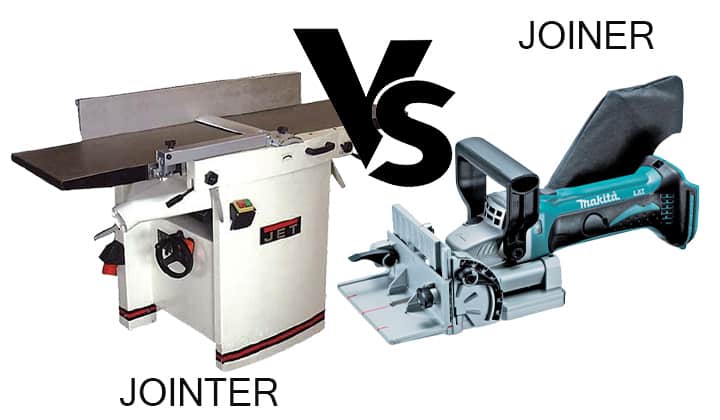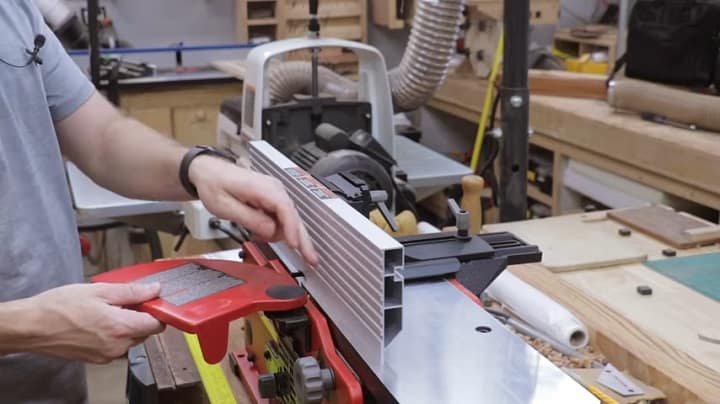I love creating free content full of tips for my readers, you. I don't accept paid sponsorships, my opinion is my own, but if you find my recommendations helpful and you end up buying something you like through one of my links, I could earn a commission at no extra cost to you. Learn more
As joiner and jointer sound pretty similar, a novice woodworker can be confused about which one to choose between joiner vs jointer and the purposes of these tools.
Well, it’s not about which one to choose over the other one because both tools work differently.

In this post we'll cover:
What Is a Joiner?
Joiners are a tool that was manufactured to build a joint by connecting two pieces of wood. The most commonly used joints using Joiner tools are the Tenon / Mortis or concealed biscuit joints. You can cut a bird’s mouth (wood cutting design) or a slot at either end of the mitered or flat wood using the joiner. To join the pieces of wood, you need to insert the tenon or biscuit joining piece with glue into the slot. However, they’re used for biscuits joints, tenon/mortise joints, or plate joints; among these joints, tenon/mortise is the more structural and sturdier joint.What Is a Jointer?
Jointers are different from joiners. It’s a piece of heavy-duty machinery with an infeed and outfeed table. Generally, this wood cutting tool uses a sharp cutter head to cut wood.
Differences Between Joiner vs Jointer
The main differences between joiner vs jointer are:Functionality
Joiner is being used to join two pieces of wood together, whereas Jointer is used to ensure perfectly straight and square edges.Famous For
The Joiner is famous for biscuits and tenon joints, and Jointer is popular for smoothing and flattering the twisted or uncertain surface of wood pieces.Compatibility
Joiner is suitable for concealed joints and joining wood. This machine can join woods with biscuit joints, tenon/mortise joints, or plate joints. And Jointer is suitable for high-quality wood finishes. This device includes two main types of joints as Benchtop jointers and Stationary jointers.Final Thoughts
If you were having difficulty deciding between joiner vs jointer, now you know which one you need. Both machines work in their ways with their functionalities. So, pick a joiner when you want to join two wood pieces together, and go for a jointer if you need to perfect the edges of the wood. However, a jointer is a bit expensive and requires good skills to use it. The work you want to do with a jointer can be done with your hands, but using this machine makes the work quicker and more accurate.I'm Joost Nusselder, the founder of Tools Doctor, content marketer, and dad. I love trying out new equipment, and together with my team I've been creating in-depth blog articles since 2016 to help loyal readers with tools & crafting tips.
